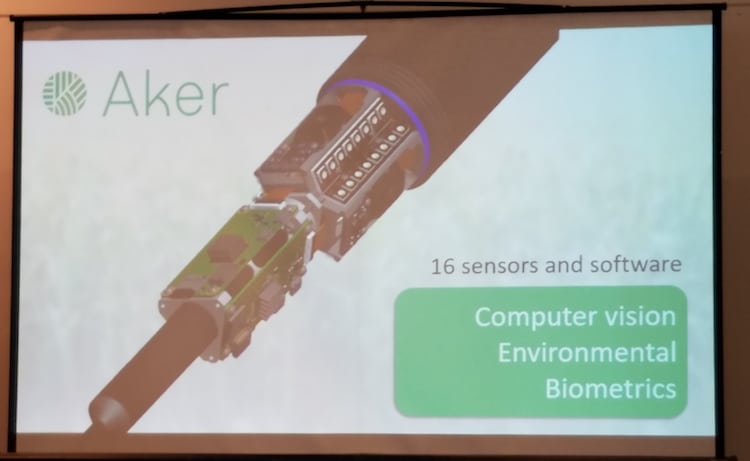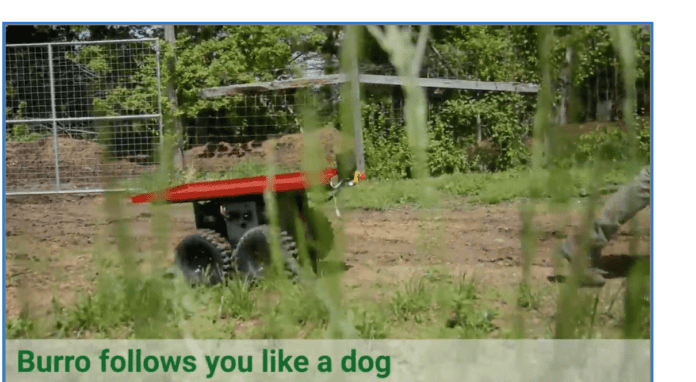Two agtech startups from demo day need 5G more than others.
SALINAS, California — Salinas — the “salad bowl of the world” — grows agricultural tech entrepreneurs. At the National Steinbeck Center in Salinas this week, nine nervous startup executives pitched their agriculture-related startups to potential investors. Thrive AgTech’s current cohort of startups pitched products as varied as fertilizer based on exclusive biomes and New York City food waste and methods to hybridize crops, robotic field help, and diagnose disease.
Since 2015, Thrive AgTech has been bringing together startups, corporations, growers, and investors who are committed to advancing food production and agriculture. The nonprofit works with corporate partners to understand the pain points in agriculture and then it looks for startups that aim to solve those problems. Thrive runs a seed accelerator twice a year in Silicon and Salinas Valleys of California, holds networking events and demo days and, through its Thrive Fund, invests in startups. Wednesday showcased Thrive’s fourth cohort. The demos were held in conjunction with Forbes’ annual Ag Tech day.
The common themes were labor, yields and availability of arable land. Several presenters said that U.S. agriculture had a labor shortage, because of the political climate but also because the work is back-breaking and the available labor force lives in urban environments. Streamlining what the few humans do on the farm and saving their time is seen as a way to increase yield, especially on specialty crops such as berries and grapes that need to be handled by humans.
Out of the 2018 cohort, Augean Robotics (AGR), headquartered in Philadelphia, PA, seemed most likely to benefit from network expansions and 5G. AGR makes a robotic cart that uses artificial intelligence to learn its route. The cart follows a worker up a row, learns its route, and then becomes the loading platform that delivers the crop from the workers in that row to the loading truck at the end of a row. The workers, called hand-pickers, can pick more crop because they don’t need to leave the plants just to deliver and empty the crop into a collection point. Burro, the robot’s name, will do that work for them.
AGR CEO Charlie Andersen, who grew up on a farm, was inspired to create this labor-saving device because he realized how much time is wasted in moving the crop. The human being’s value is picking the crop, which requires fine motor skills, and yet the hand pickers spend 30% of their time in the field taking the crop to a truck at the end of the row.
Burro is powered by two lead-acid batteries and has 15 miles to a charge, perhaps 10 miles when fully loaded, Anderson said during the demo. The robot has a 26-inch by 48-inch chassis and comes with a two-wheel and a four-wheel drive option. Burro runs at a top speed of 5 mph and carries 300 to 450 pounds depending on the option chosen.
“We lose sleep thinking about 5G,” Andersen and Deniz Ilhan, co-founder and CTO, both admitted to RCR Wireless News after their demo. They are eagerly waiting 5G and will start planning actively for it six months to a year. The Burro is moving more than just fruit —100 GB of data moves off the Burro each day and it can’t happen in real time right now. Both the CEO and CTO recognize that moving data fast will be key to their business. They hope to expand Burro’s uses to collecting information about the crops as it passes them. Even with 5G, there’s no guarantee every field will have that connectivity, however.
They — or the farmer — may need some COWs to go with their Burro.
AGR was awarded first place by SVG Partners, the group that started Thrive AgTech. A runner up, Aker, also has a need for in-farm connectivity.
Aker, founded by a midwestern corn farmer and an engineer, uses a sensor they designed mounted on a drone to take a survey of the crop — in this case, it’s 14-foot corn — looking for disease, pests and fertility issues within the crop’s canopy. They hope to give the farmer precise data for targeting spraying, drainage issues and fertilizing. As in tower inspections, drones collecting data need to offload that data quickly. Having a 5G connection would enable the data to offload from the drone in real time and could give options for a farmer or insurance company to ask for more views while the flight is happening.

The City of Salinas calls itself the “epicenter of agtech.” This was cemented by SVG Partners, which unveiled plans for the THRIVE Business Park in Salinas and expanded THRIVE-X University Challenge and Accelerator Program. A local farm, Taylor Farms, is also huge supporter and was prominent at the agtech event. The mayor joked that he should rename Salinas “Taylor town” because of the investment Taylor Farms has made in the downtown area and working with agtech. Taylor Farms is a key partner with Thrive AgTech.
The Thrive AgTech invests at least $100,000 for 5% equity in each startup that joins their cohorts. They provide mentorship, coaching, an incubator space at Western Growers Association in downtown Salinas, legal counsel, engagement with corporates and access to the Forbes AgTech Summit.

